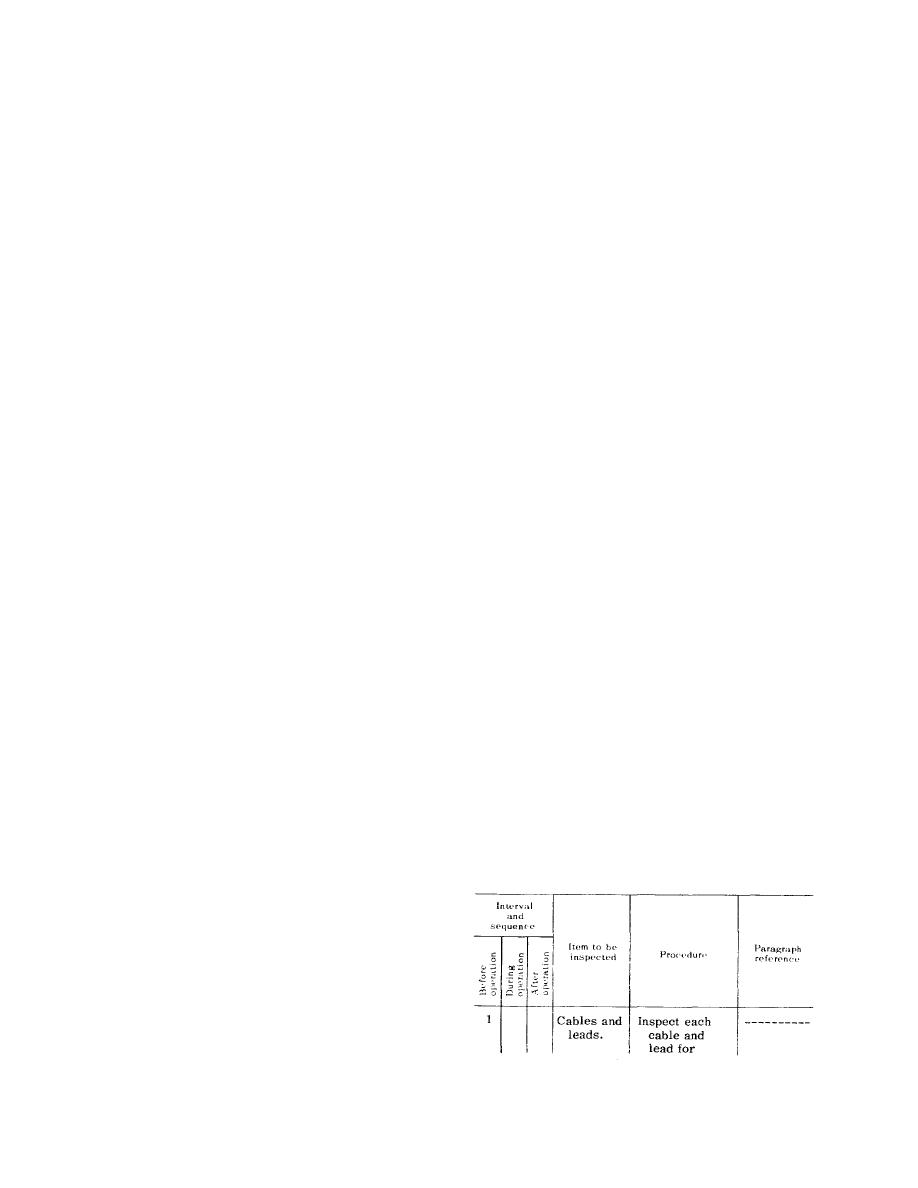
trichloroethane with the skin or
45. Preventive Maintenance by Operator
prolonged breathing of the fumes
a. Purpose. To assure maximum oper-
is dangerous. Make sure adequate
ational readiness, it is necessary that the
ventilation is provided.
equipment be systematically inspected at
(3) Rubber parts other than electrical.
intervals every day it is operated, so de-
Clean rubber parts with soap and
fects may be discovered and corrected
warm water and dry thoroughly.
before they result in serious damage or
failure. Certain scheduled maintenance
b. General Precautions in Cleaning.
=
services will be performed at these des-
(1) Provide adequate ventilation both
ignated intervals. Any deficiencies dis-
during and after use of trichloroe-
covered that cannot be corrected by the
thane. Work rooms must not be
operator, or corrected by replacing parts
closed in. Avoid prolonged inhala-
will be reported on DA Form 2404.
tion of vapor; headache or nausea
may result. In contact with skin,
b. Daily Preventive-Maintenance Serv-
ice. Each equipment will be inspected each
this cleaner may cause irrita-
day that it is operated. This service is
tion.
divided into three parts, as indicated in
(2) Self-emulsifying decreasing sol-
(1) through (3) below.
vent compound, mineral spirits
(1) Before-operation service. This is
p a i n t thinner, and dry-cleaning
a brief service to ascertain that
solvent are flammable and should
the equipment is ready for opera-
not be used near an open flame.
tion; it is mainly a check to see if
Fire extinguishers should be pro-
c o n d i t i o ns affecting the equip-
vided when se materials are
ment's readiness have changed
used. Use only in well-ventilated
since the last after-operation serv-
places. These cleaners evaporate
ice.
quickly and have a drying effect on
(2) During-operation
This
service.
the skin. If used without gloves,
service consists of detecting un-
they may cause cracks in the skin
satisfactory performance.
and, in the case of some individ-
(3) After-operation service. This is
uals, a mild irritation or inflam-
the basic daily service for the
mation.
equipment. It consists of correct-
(3) Avoid getting petroleum products,
ing, insofar as possible, any op-
such as mineral spirits paint thin-
erating deficiencies. Thus, the
ner, dry-cleaning solvent, engine
equipment is prepared to operate
fuels, or lubricants, on rubber
upon a moment's notice.
parts, as they will deteriorate the
rubber.
(4) The use of Diesel fuel oil, gaso-
46. Specific Procedures for First Echelon
line, or benzene (benzol) for clean-
Table I gives the specific procedures to
ing is prohibited.
be performed on the equipment by the op-
erator for each daily service.
c. Rust Removal. Remove rust or cor-
Table I. Preventive-Maintenance
rosion from all parts of the materiel. To
Checks and Services
remove rust or corrosion from unfinished
1st Echelon
Daily Schedule
surfaces, use steel cleaning brushes or
abrasive cloth. On finished surfaces, other
than highly polished surfaces, remove rust
or corrosion by buffing with a rotary wheel
wire brush constructed of steel wire be-
tween 0.010 and 0.025 inch in diameter.
Crocus cloth may be used manually to re-
move rust or corrosion from polished
surfaces.
20

